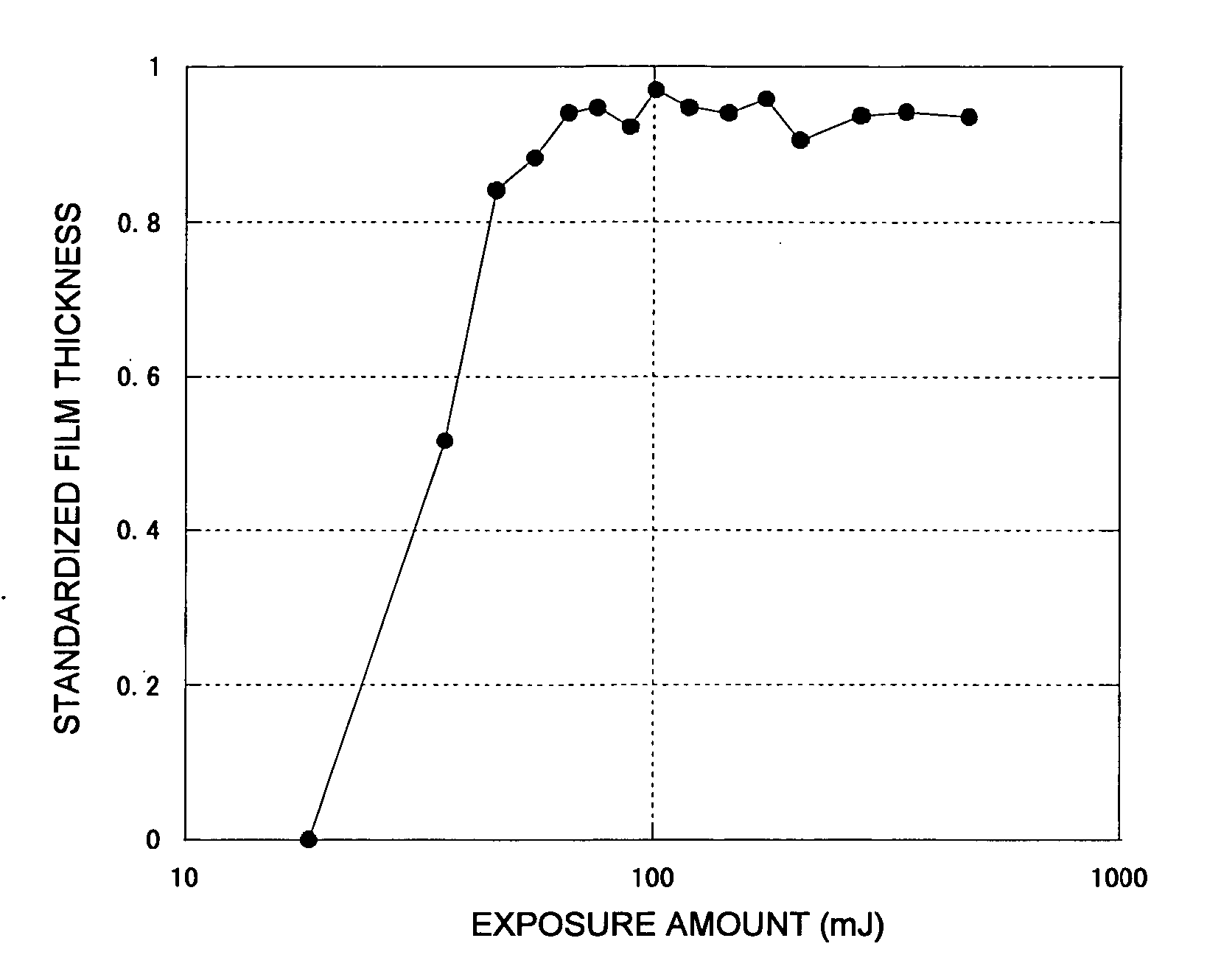Resist composition, method of forming resist pattern, semiconductor device and method of manufacturing thereof
a technology of resist composition and resist pattern, which is applied in the field of resist composition, can solve the problems of poor film forming ability, high crystallinity of nanoedges, and occurrence of nanoedge roughness, and achieve high-quality, high-performance semiconductor devices. high-performance, high-quality results
- Summary
- Abstract
- Description
- Claims
- Application Information
AI Technical Summary
Benefits of technology
Problems solved by technology
Method used
Image
Examples
example 1
—Preparation of Resist Composition—
[0111] A resist composition (coating liquid) was prepared on the basis of the following composition.
Chinese tannin (hydrolyzable tannin, manufactured by Kanto100parts by massChemical Co., Inc.)Uryl derivative expressed by following structural formula (9) (the20parts by masscrosslinking agent, manufactured by Sanwa Chemical Co., Ltd.)Triphenylsulfonium perfluorobutane sulfonate (acid generator,3parts by massmanufactured by Midori Kagaku Co., Ltd.)Ethyl lactate (solvent, manufactured by Kanto Chemical Co., Inc.)1,000parts by massStructural formula (9)
[0112] When the obtained resist composition was dissolved into THF (tetrahydrofuran) as a solvent and analyzed by gel permeation chromatography, no high molecular mass component corresponding to the polymer was detected.
—Experiment Evaluating Characteristics of Resist Composition—
[0113] The obtained resist composition (coating liquid) was coated to a thickness of 0.3 μm on a silicon wafer and prebakin...
example 2
[0116] Resist compositions were prepared, and experiments evaluating the characteristics of the obtained resist compositions were carried out in the same manner as in Example 1, except that the uryl derivative used as the crosslinking agent in Example 1 was replaced with the urea derivative expressed by following structural formula (8), the pyrogallol derivative expressed by following structural formula (38), and the melamine derivative expressed by following structural formula (7), respectively.
[0117] Note that the pyrogallol derivative expressed by above structural formula (38) is 2,6-bisdroxymethyl-p-cresol.
[0118] When the obtained resist compositions were dissolved into THF (tetrahydrofuran) as a solvent, respectively, and analyzed by gel permeation chromatography, no high molecular mass component corresponding to the polymer was detected.
[0119] The sensitivity curves of the exposure samples prepared by the same method as in Example 1 are shown in FIG. 3 for the urea deriva...
example 3
[0121] A resist composition was prepared, and an experiment evaluating the characteristics of the obtained resist composition was carried out in the same manner as in Example 1, except that the uryl derivative used as the crosslinking agent in Example 1 was replaced with 1-adamantanol (manufactured by Kanto Chemical Co., Inc.) which imparted a polarity change.
[0122] When the obtained resist composition was dissolved in to THF (tetrahydrofuran) as a solvent and analyzed by gel permeation chromatography, no high molecular mass component corresponding to the polymer was detected.
[0123] The sensitivity curve of the exposure sample prepared by the same method as in Example 1 is shown in FIG. 5. From FIG. 5, it can be understood that the resist composition of the present invention using 1-adamantanol behaved as a negative resist. Note that, with 1-adamantanol, an increase in the molecular mass due to the crosslinking reaction does not occur, and therefore, it is clear that the resist be...
PUM
| Property | Measurement | Unit |
|---|---|---|
| pressure | aaaaa | aaaaa |
| wavelength | aaaaa | aaaaa |
| temperature | aaaaa | aaaaa |
Abstract
Description
Claims
Application Information
 Login to View More
Login to View More - R&D
- Intellectual Property
- Life Sciences
- Materials
- Tech Scout
- Unparalleled Data Quality
- Higher Quality Content
- 60% Fewer Hallucinations
Browse by: Latest US Patents, China's latest patents, Technical Efficacy Thesaurus, Application Domain, Technology Topic, Popular Technical Reports.
© 2025 PatSnap. All rights reserved.Legal|Privacy policy|Modern Slavery Act Transparency Statement|Sitemap|About US| Contact US: help@patsnap.com



